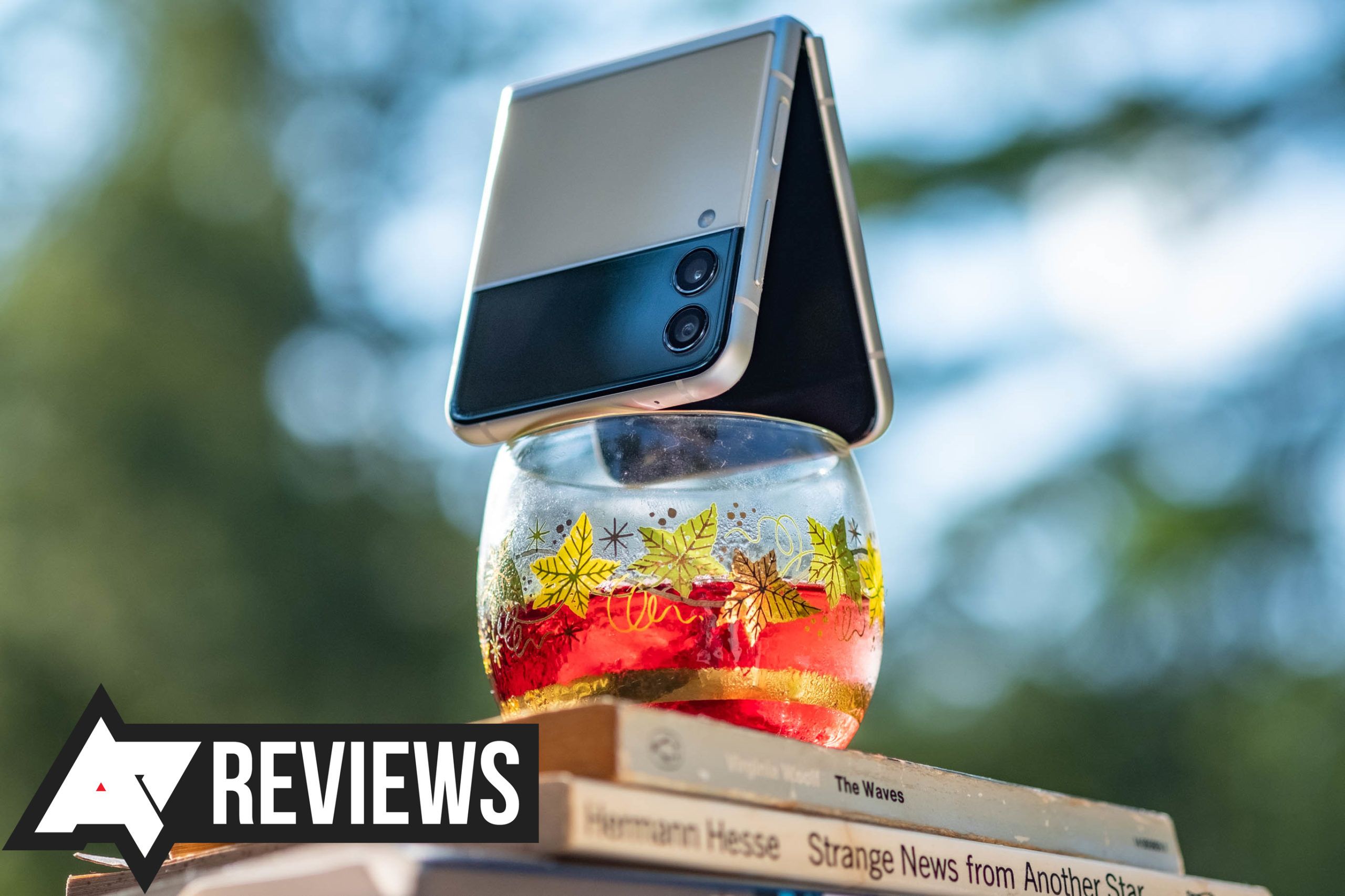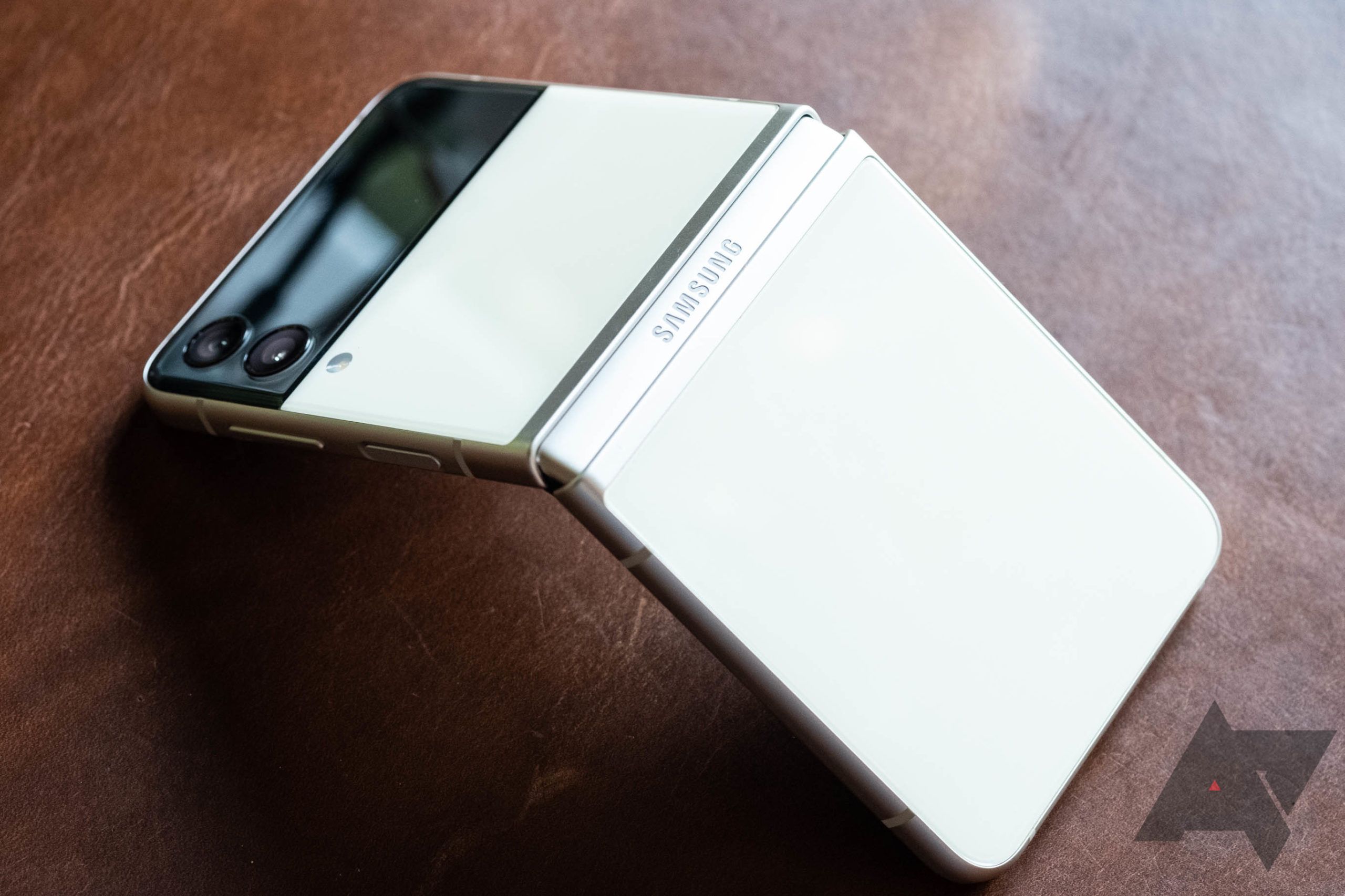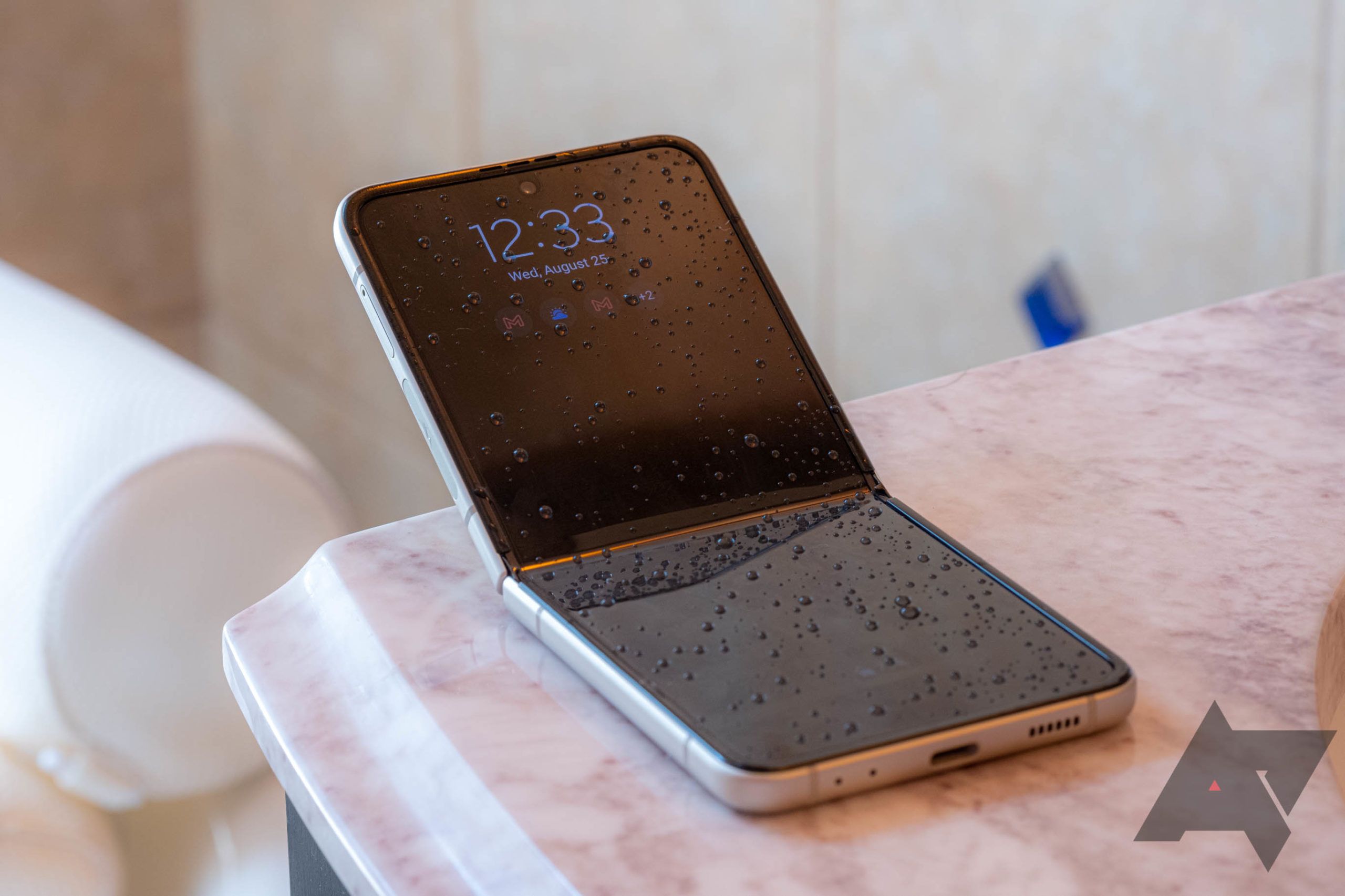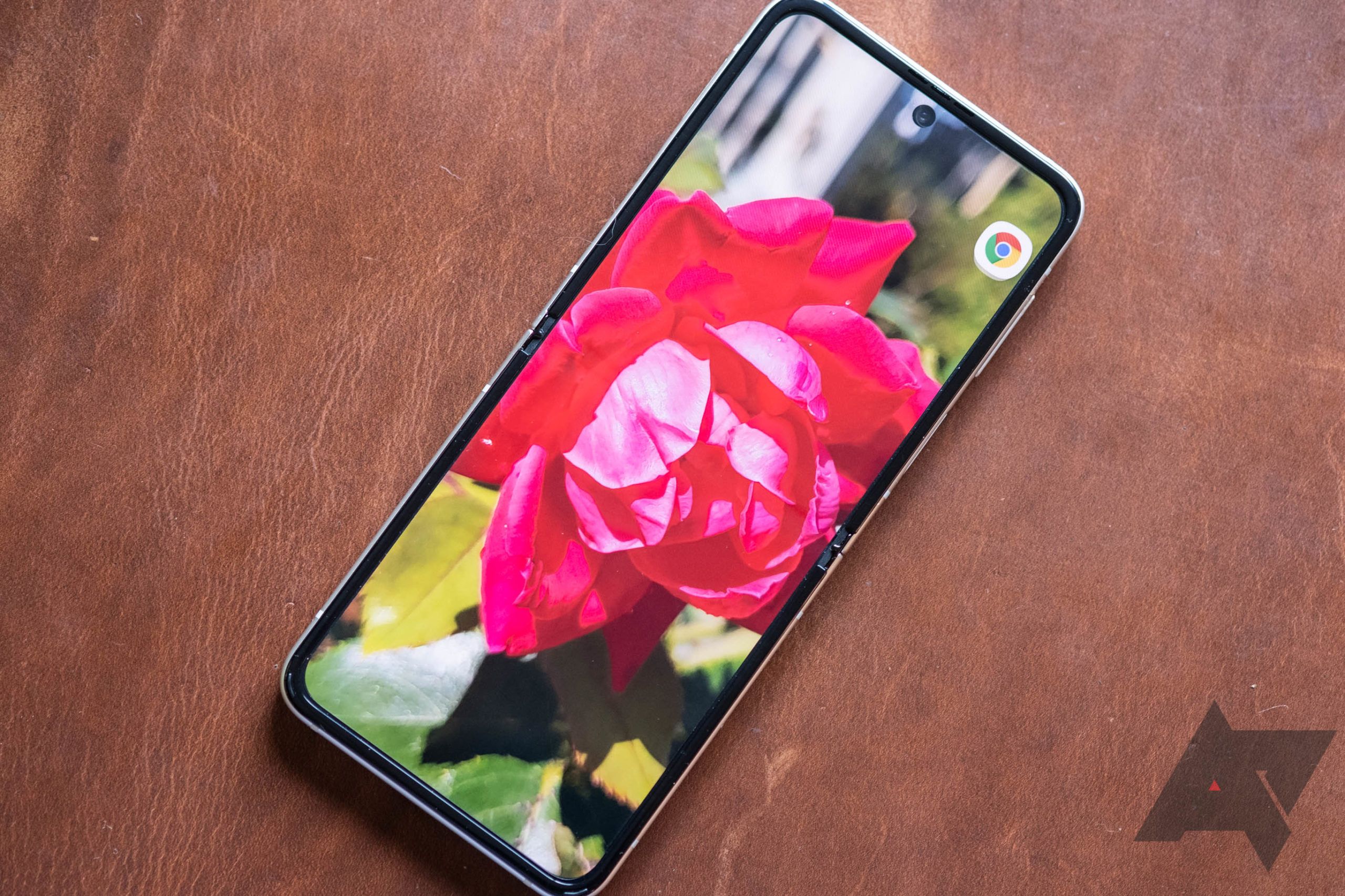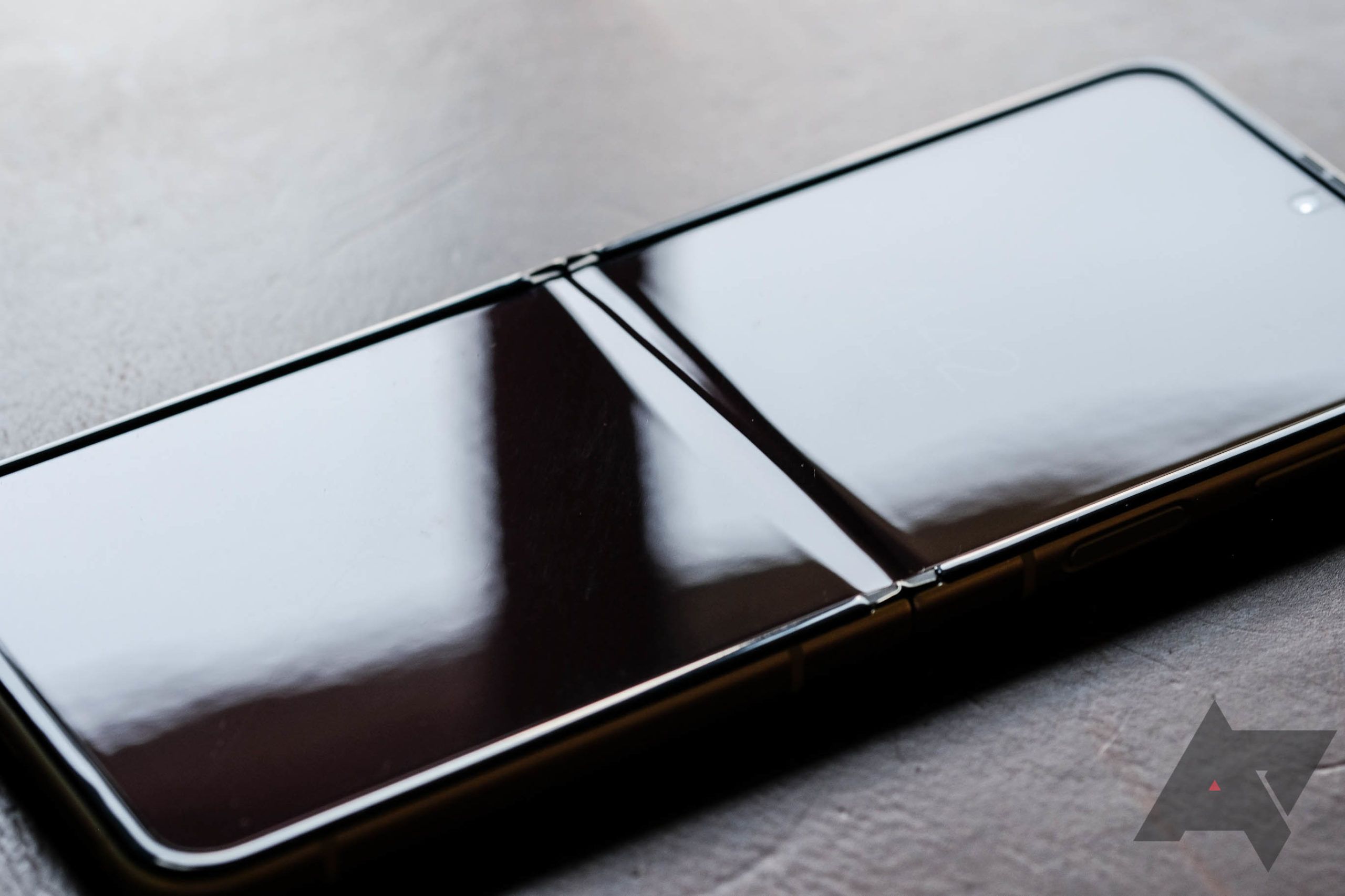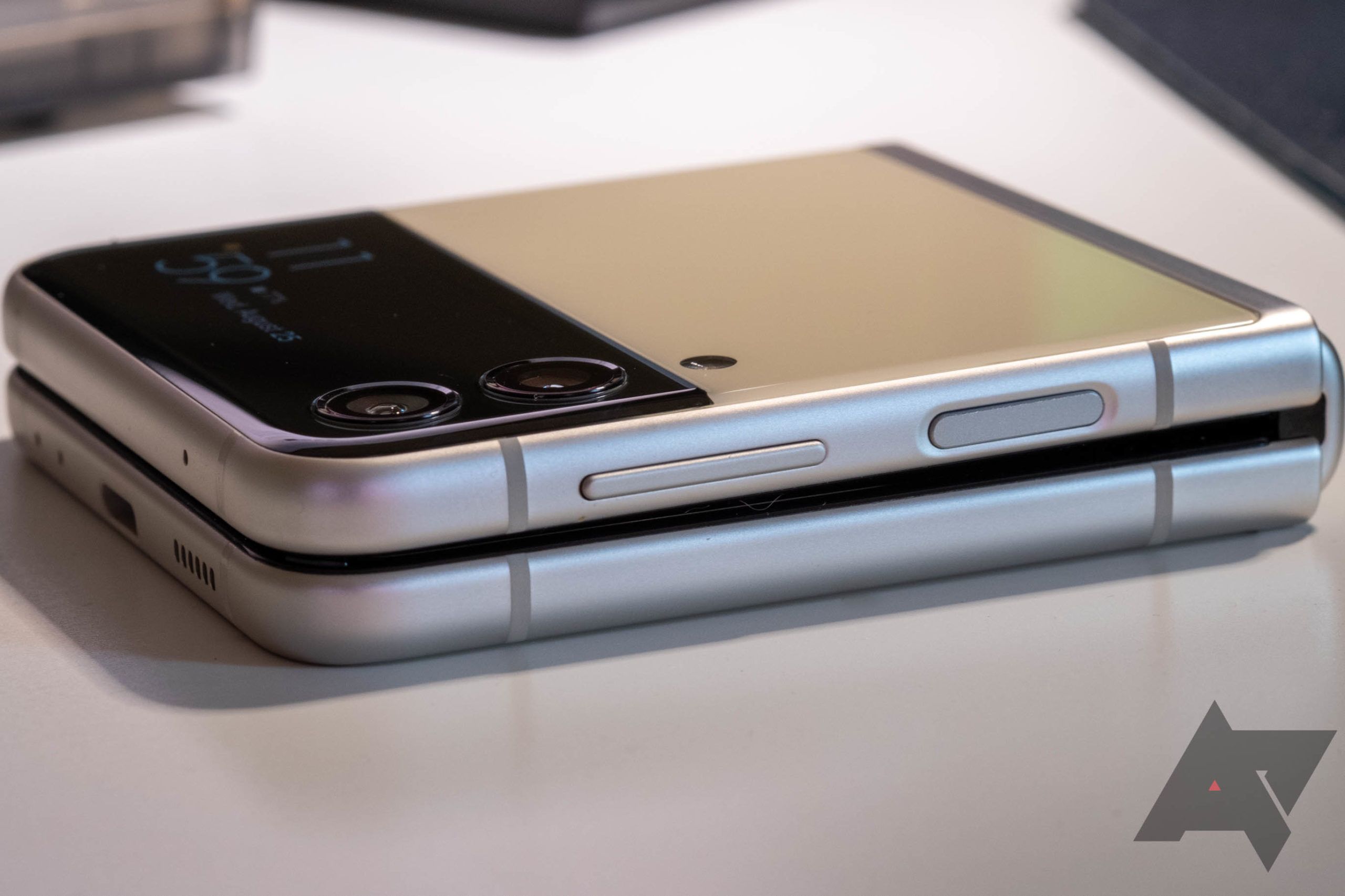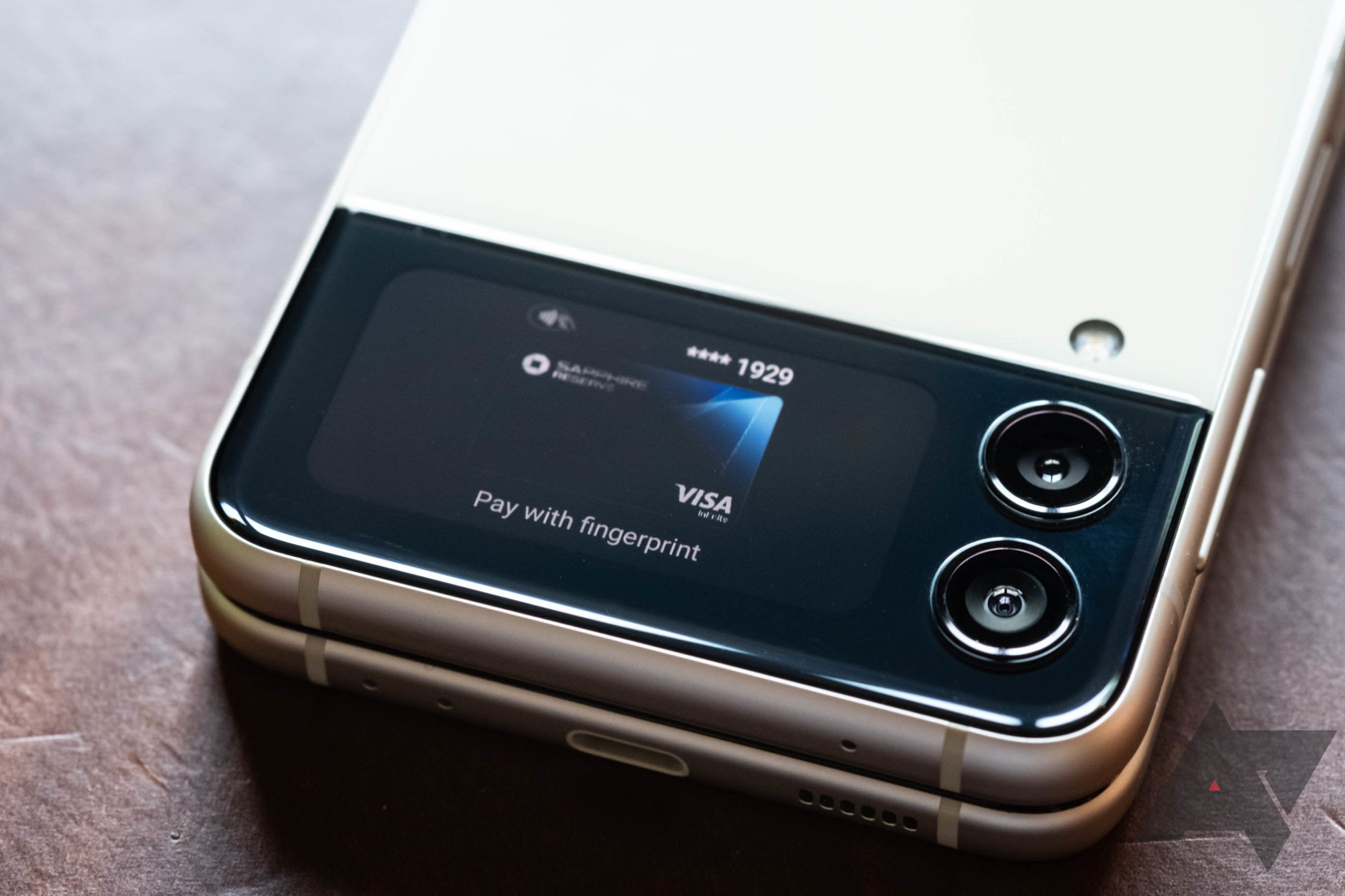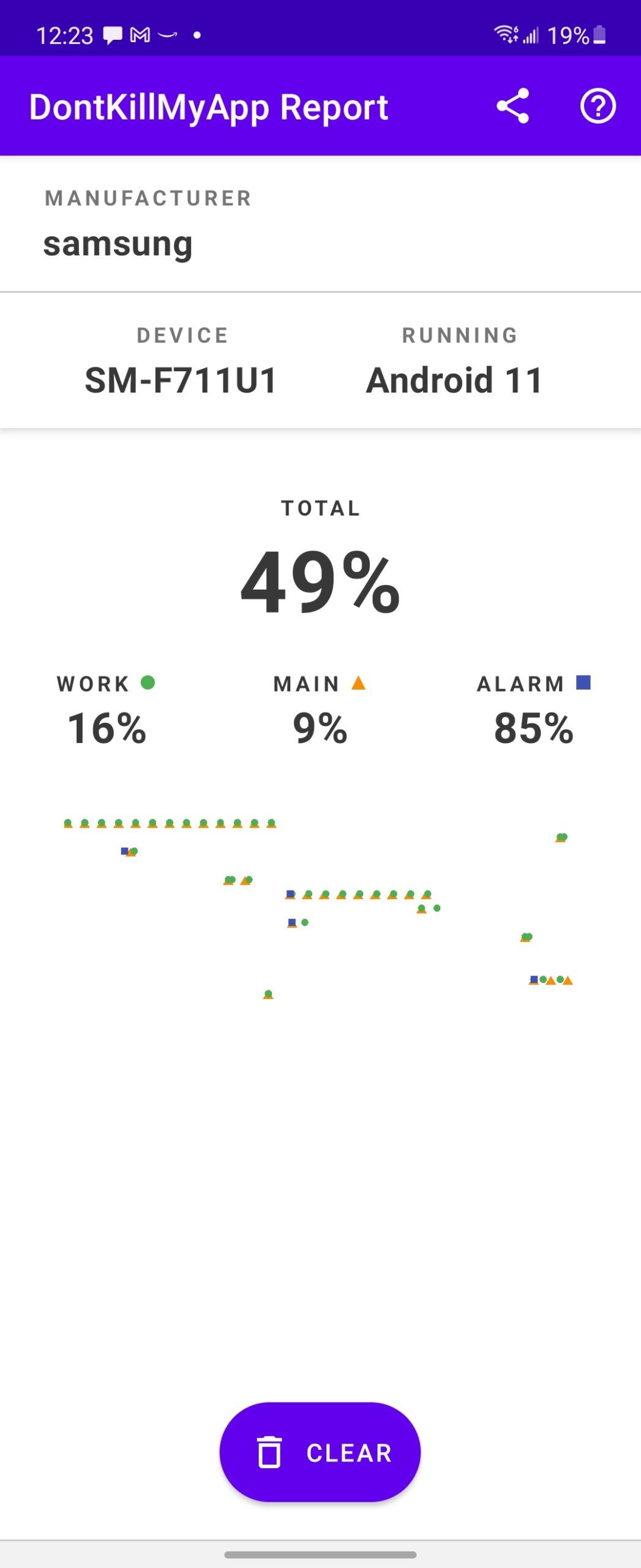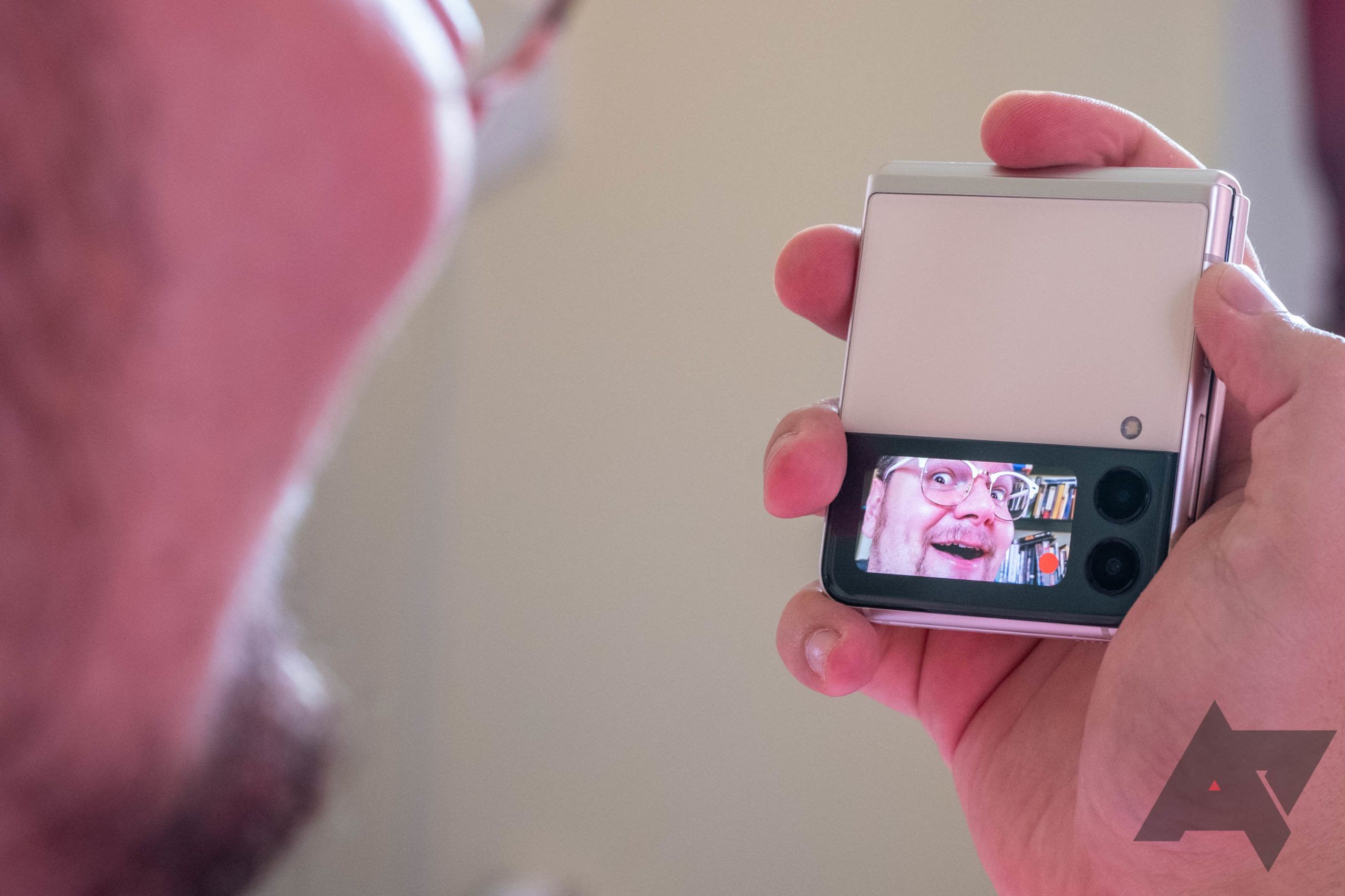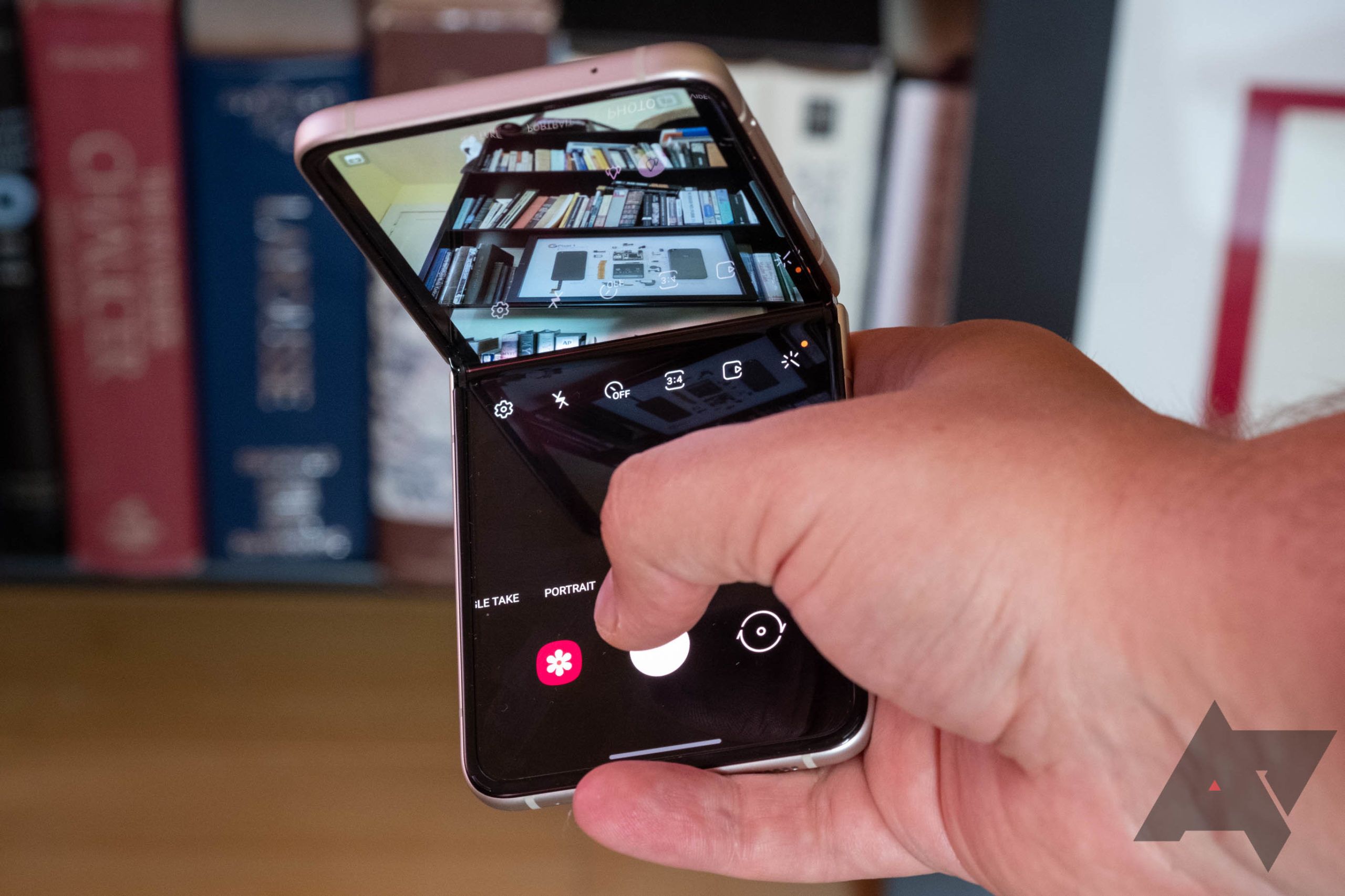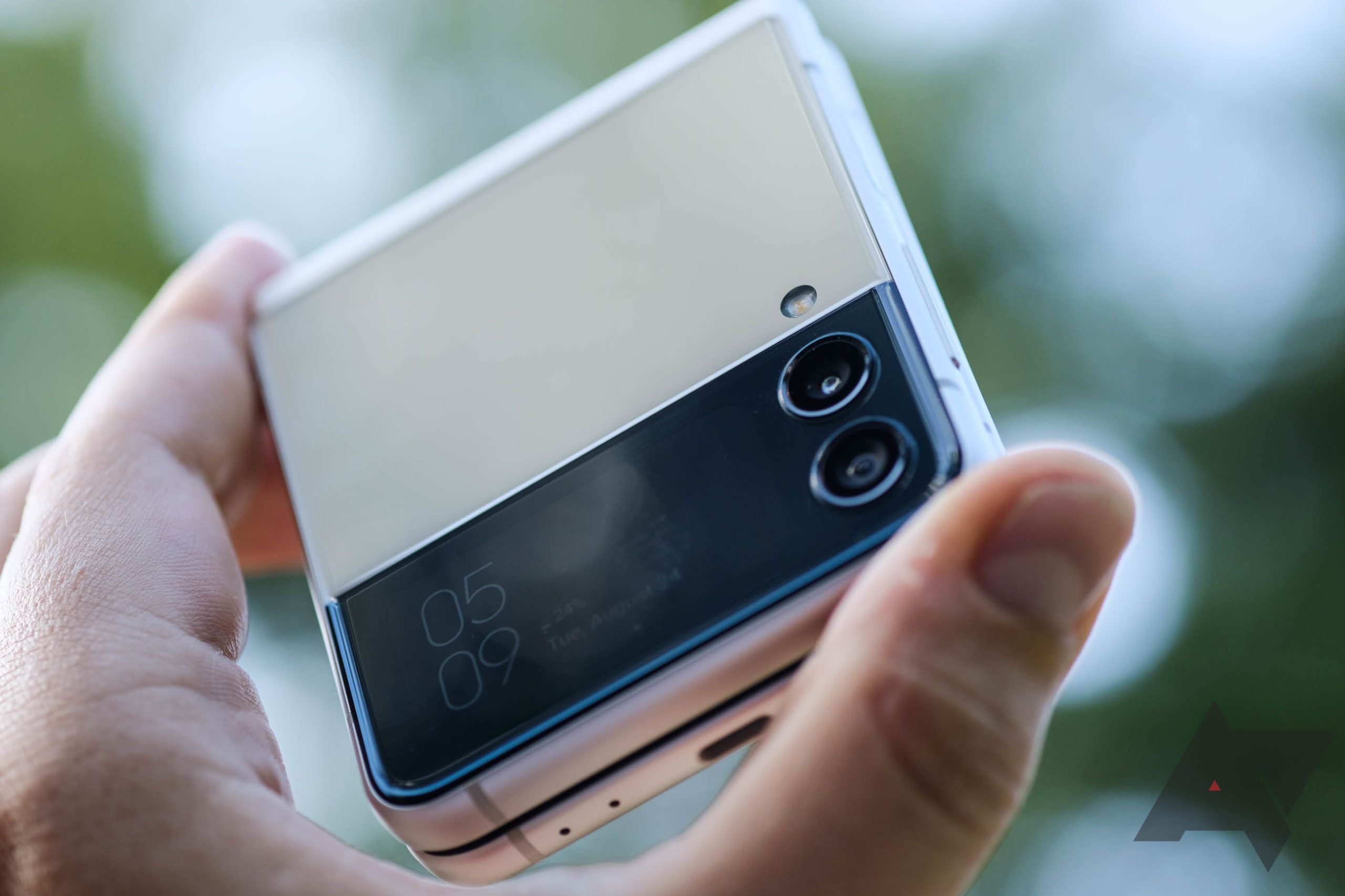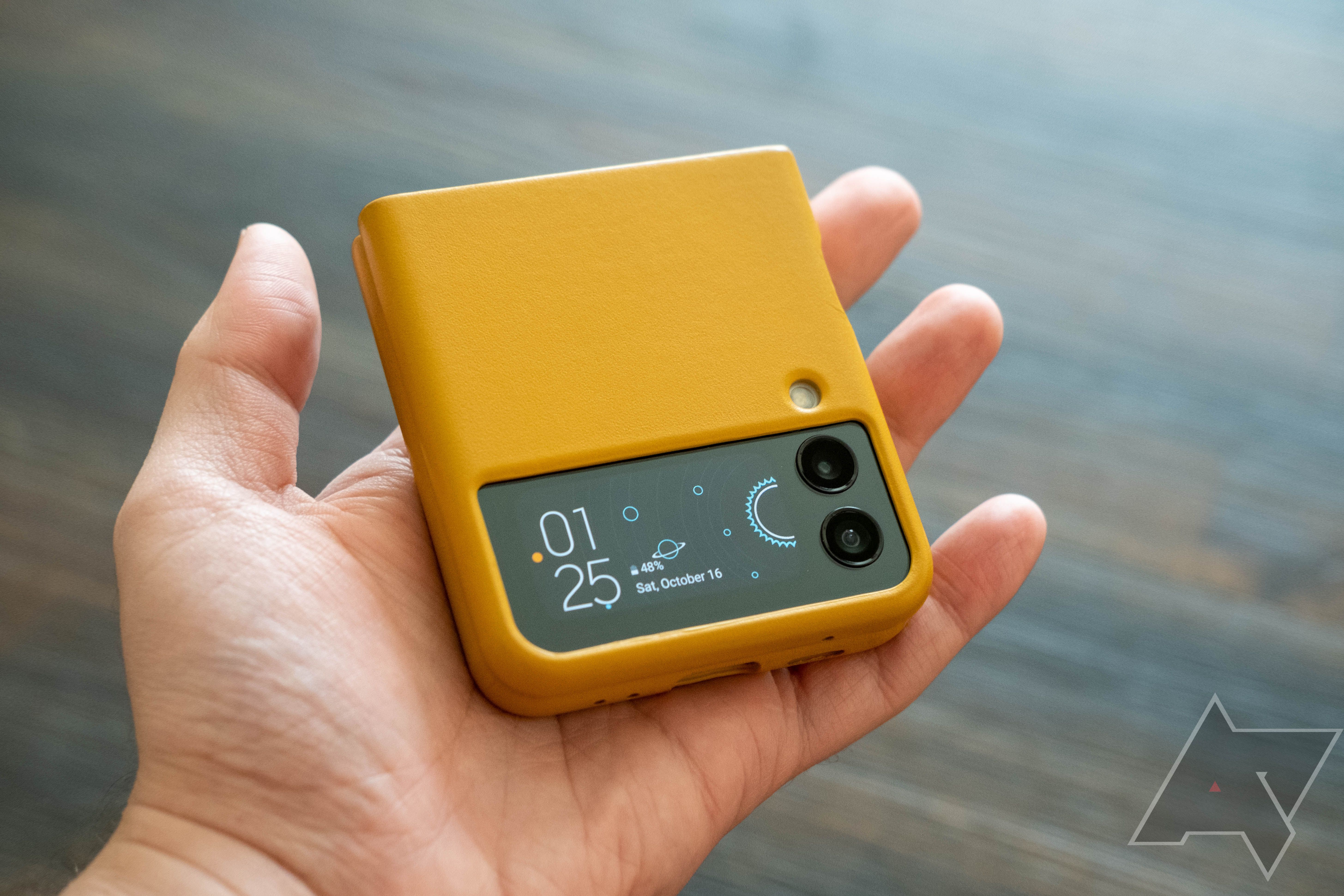Read update
- The first foldable you should buy
The Z Flip3 is tantalizingly close to being everything I hoped it would be. Starting now, folding phones aren't just for early adopters. You can go out and order one right now, and you probably won't be unhappy with it — or pay through the nose for it. I still have some complaints when it comes to things like middling-to-poor battery life, and part of me wishes Samsung would just take a stance to either cut more corners or fewer, but we're basically "here." The Z Flip3 is liminal, and in five years, we'll look back on it as marking the beginning of the true folding phone era.
SPECS
|
Cover display |
1.9" Super AMOLED @ 260 x 512, 935 nits |
|
Folding display |
6.7" Dynamic OLED @ 2640 x 1080, up to 120Hz, 1,200 nits peak |
|
SoC |
Qualcomm Snapdragon 888 |
|
RAM |
8GB |
|
Storage |
128GB or 256GB UFS 3.1 |
|
Rear cameras |
12MP f/2.2 ultra-wide (123°), 12MP f/1.8 main w/ OIS |
|
Cover camera |
10MP f/2.4 |
|
Power |
3,300mAh dual-cell battery Up to 15W wired charging (Quick Charge 2) Up to 10W Qi wireless charging, 4.5W reverse wireless charging |
|
Connectivity |
5G (incl. mmWave), LTE, Wi-Fi 6, Bluetooth 5.1 Supports eSIM and/or Nano-SIM |
|
Peripherals |
Fingerprint sensor (capacitive), NFC, USB-C |
|
IP rating |
IPX8 (1.5m freshwater submersion for 30 min.) |
|
OS |
One UI 3.1.1 w/ Android 11 |
|
Dimensions |
Unfolded - 72.2 x 166 x 6.9mm Folded - 72.2 x 86.4 x 15.9-17.1mm 183g |
|
Colors |
Cream, Green, Lavender, Phantom Black Samsung exclusives - Gray, White, Pink |
THE GOOD
|
Form factor |
The Galaxy Z Flip3 is a phone that fills your hand, not your pocket. This design gives you a big screen in a shorts-compatible footprint, and I love that. |
|
Build quality |
IP-rated, and it feels solid for as many moving parts as it has. |
|
Price |
Samsung's hit the three-digit threshold, making the Z Flip3 a real option for more people. |
|
Cover screen |
It's actually useful this year — about as handy as having a wearable right on the outside of your phone. |
|
Software |
Even if you don't like One UI very much, Samsung's interface is the best way to use a folding phone. |
THE NOT SO GOOD
|
Battery life |
So-so to bad, and not what you expect for the screen size or the price. |
|
Offensively slow charging |
15W feels like a joke for $1,000 in 2021. |
|
Camera |
It's fine, but not as good as you'd hope for the price — that money got spent on other parts. |
|
Screen |
If you're really picky, the screen has a couple minor issues, and the non-user-replaceable screen protector can come installed crooked. |
Design, hardware, what's in the box
They might seem pedestrian to our readers now, but foldables are still the hot new technology for many outside our little tech bubble. But, while using a Z Flip3 in public will still garner plenty of attention from folks, this new model is actually pretty true to the company's prior design. Samsung didn't reinvent the wheel, and it didn't need to.
Right now, foldables come in two types, easily classified with a simple grade-school art-class instruction: Hamburger or hotdog. The Z Flip3 takes the former approach, closing along its longer edges to make a smaller but more traditionally rectangular screen when unfolded, compared to the bigger, tablet-style Z Fold. I've used both types of foldables, and this is the design I think will resonate more easily with more people. Ultimately, It's the same layout you're already used to in a phone, just with a hinge in the middle.
Flip it open, and everything's where you expect it to be. There's a side-mounted combination fingerprint sensor and power button, volume controls, and even a normal hole-punch style front-facing camera staring at you. Only a lip around the edge of the display, a line through the middle of the aluminum frame, and the wave of the screen's fold imply that anything might be amiss. A little bit of firm pressure to the back, and that crack on the back slides smoothly, closing the phone like a clamshell.
The motion of snapping it both open and closed is a sensation that's honestly very gratifying and hard to express, especially if you weren't making calls during the flip-phone era. But the hinge doesn't flip between two binary states. The resistance is high enough and smooth enough that you can stop it at most places in between open and closed, and some apps will even respond to it with tweaked interfaces — more on that later. But even separate from software changes, it's just a satisfyingly well-engineered mechanism that is entertaining to swing open and snap closed. And flipping the phone shut at the end of a call is a satisfaction most of us haven't known for over a decade.
This year, Samsung included two big improvements over the original Galaxy Z Flip, addressing the common criticism of durability: The Z Flip 3 is IP rated for water resistance and has a stronger display.
Samsung gave The Verge a handful of engineering details, but ultimately, the way the phone is waterproofed is pretty unique. See, Samsung recognized that it couldn't actually do anything to stop water from coming in the hinge, given all the moving parts. Instead, it just made sure there aren't any bits in the hinge or folding area that could be damaged by water, and it plugged every gap further inside with gaskets and loaded every gear with grease. The hinge might get wet, and your Z Flip3 could literally have water "inside" it, but none of the functional electronic bits will be affected.
I wasn't allowed to submerge the Z Flip3 to test the IP-rating, but I did find myself outside on the phone during a somewhat placid tropical storm, and my Z Flip3 continues to work. I'd still probably baby a phone like this and keep it from being wet in the first place, but you shouldn't have to feel too paranoid taking an emergency call in the rain.
The new display is still 1080p, but this time it's a much smoother 120Hz and also ostensibly up to 80% stronger, in large part thanks to a new screen protector. I know, that sounds like a minor thing, but Samsung's prior devices used a TPU-based screen protector that even a fingernail could permanently damage very easily. I still have my original Galaxy Z Flip, and though mine hasn't picked up any major dings, it does have a handful of fine, light scratches in the direction I usually scroll. The new PET-based layer should be more scratch-resistant, and it won't be permanently deformed quite so easily. However, I wish Samsung was able to put the damn thing on straight.
The screen protector on two units we got was off-center and slightly crooked.
We tested two different units from Samsung, and both phones had the pre-installed screen protector applied slightly crooked. In both cases, it was still "functional," but it didn't entirely cover the viewable display area, and it was visually off-center in a way I found a little distracting. Samsung tells us this screen protector is not a user-replaceable part, so if yours is askew, there isn't much you can do about it. However, Samsung tells me that my experience may have been unique and if customers run into that issue, the company will make it right.
Under that protector, the screen on the Galaxy Z Flip3 gets nice and bright, more than adequate for outdoor use. I did notice a just barely photographable effect with high-contrast linear content (i.e., black text on white backgrounds) that caused a sort of "band" of lower brightness out to the edges of the screen. But it was only really an issue at high brightness levels while scrolling, and some other OLED displays do this to some degree — the OnePlus 8 Pro did. Still, as a display nitpicker, the Z Flip3's screen isn't quite as good as some others.
The crease where the phone folds isn't visually distracting, but you will feel it when scrolling or spot the change in reflection outdoors. Ultimately, the display is bright, has anecdotally good color, feels durable, and (outside that effect with high contrast content) it's generally uniform. The company also made the bezel that surrounds the display a little less prominent, which can make gesture-based navigation a little easier — though I had no real issue with the taller bezel on the original model. But the primary display isn't the one you should be most excited about.
Samsung has increased the size of the exterior "cover screen" significantly. Last year, it was a little over an inch wide and barely big enough to read a few words at a time. The new nearly 2" display can let you read full notification content (even whole emails!) and trigger Samsung Pay. It's sort of like having a little wearable device on the outside of the phone, with similarly limited controls. Samsung has a handful of widgets and customizable clocks you can add for things like media controls, weather, and even your schedule or alarms. And if you enable the always-on display, the cover screen stays on, too. I'm glad Samsung made the cover screen larger this time around, but I think it could still stand to be a bit bigger on future devices, and an edge-to-edge design that isn't smaller due to camera placement would be ideal.
The screens are the clear star of the show, but other hardware on the device is appropriately premium as well. Samsung claims it's using a new aluminum alloy that's even stronger, and the glass parts of the cover are Gorilla Glass Victus. Buttons could be a little more satisfyingly tactile, and the side-mounted fingerprint sensor works better this time than it did for me on the original Z Flip.
By the way, if you're wondering why Samsung kept that design instead of opting for an in-display fingerprint reader, one of the company's product managers explained to me that the primary reason for keeping it was actually to allow biometric authentication while the phone is flipped shut, so you can use Samsung Pay while it's closed.
Haptics aren't much to write home about — fine for an Android phone in 2021, but not exceptional. Speakers are stereo via the earpiece and bottom-firing unit, and sound quality is fine and gets loud enough for alarms, though it's the usual tinny smartphone fare.
The Z Flip3 doesn't come with much in the box. You get the phone, a short Type-C to Type-C cable, the usual warranty cards, and that's about it. There's no charger.
Software, performance, and battery
Samsung's flavor of Android used to be pretty awful back in the day, but now it's one of the better versions you can use, and even Google seems to be taking some design cues from it. Put simply, One UI 3.1 is intuitive enough that you should find what you're looking for without much help, though navigating the voluminous Settings menu and Good Lock tweaks still needs a degree in Samsungology to really understand where everything is. The learning curve is milder, but it's still there.
I'm not going to rehash everything about using a Samsung phone, but there are a few good highlights, like the extensive customization options and Samsung's extra multi-window management tools. I don't think the latter particularly come in handy here with the relatively "small" Z Flip3's display, but they make it easier to come up with multi-window workflows and be productive on the go.
Samsung also managed to turn its edge panel into something genuinely useful, rather than a distraction that is better left disabled. With the original Z Flip last year, app pair functionality was killed in the edge panel for no real reason, but the company later brought it back and made it easier to understand how you make those pairs. Some apps like Chrome can still be a little buggy in multi-window modes, freaking out or just outright closing if they don't like something random about the setup. It usually works fine if you simply swipe the offending app out of memory and launch it from scratch in the modified configuration. The floating/minimized free-positioned apps also get a little obnoxious on the smaller display.
It's pretty easy to go overboard with multi-window configurations, but they can be handy.
Samsung also added a new "flex mode panel" that forces apps to move to the top half of the display when you half-shut the phone — similar to the API that's part of Android itself now, and which some apps like Duo and the built-in camera app use as part of their own "flex mode" on Samsung's foldables. It's handy if you want to force a video app to occupy the top of the phone as you fold it to serve as a base/stand, but the extra controls Samsung puts on the bottom half of the display aren't terribly useful. The feature also doesn't always work — Netflix was hit-and-miss for me.
There's also a new category of "Labs" features that includes a toggle to force multi-window on apps that don't like it. It's nice to have the freedom, but most apps that work well with multi-window already support it at that software level. (Some of these multi-window/foldable features were previously part of Good Lock, and now Samsung is making them a part of One UI itself.)
These features are handy, but I'd argue that the Z Flip3 is a single-task device that doesn't benefit as much from them as the bigger Z Fold3, and Samsung seems to agree. Some tweaks like the new taskbar pinning feature are only available on the bigger phone, which is more suited to multitasking with its larger display and more productive aspect ratio.
Samsung also continues to insist that Bixby should be a thing, making it launch by default with a long-press of the power button. You can disable Bixby easily enough, though.
Since it has a Snapdragon 888, a decent 8GB chunk of RAM, and fast storage, the Z Flip3 is basically stutter-free outside particularly heavy workloads or poorly optimized apps. Anecdotally, I didn't run into any issues with background apps being prematurely killed, but according to a benchmark in Don'tKillMyApp, Samsung's still playing with how apps can run in the background by default.
Not an ideal result. Closer to 100% in each category is better.
One thing I am miffed about is that Samsung didn't include Wi-Fi 6E. Admittedly, the benefits of 6E will be available even to older devices when used for things like mesh backhaul, but it just feels odd that Samsung would prioritize mmWave (which very few people can take advantage of) over Wi-Fi 6E, which is likely to spread much more widely in the coming years.
I hear through the grapevine that Samsung may be hoping to address some thermal issues with the phone in a future update, but I didn't have any problems with throttling or heat. In fact, given my experience with longevity, the superfluous speed of the 888, and the lower resolution of the display, I think Samsung would have been smart to go with a lower-end chipset to bring costs further down.
Battery life was a little disappointing. I almost always got between 4.5-5.5 hours of screen-on time in normal use during a single day. Samsung tells me that's just about exactly what the engineers aimed for, but that's also on the low-end of what I would expect for a phone with a 6.7" display, and pretty mediocre for 2021. Worse, plenty of my friends in the tech space here that were also playing with the phone in the last couple of weeks got much worse numbers, with some claiming as low as 2-3 hours of screen-on time in their normal workloads. That's pretty abysmal, and even though I did okay, the Z Flip3 clearly runs a very real risk of not lasting long enough for our readers. Again, maybe a lower-end chipset that consumes less power would have done this phone some good.
The Z Flip3 also only tops up at an offensively slow 15W, which feels like a joke to me for a thousand-dollar smartphone in 2021. If Samsung could step up to a OnePlus-like level for fast charging, at least the limited battery life could be offset by frequent, short charging episodes during the day. But at 15W, charging is hardly convenient. It can take over an hour and a half to fill completely.
Cameras
The camera configuration on the Z Flip3 is simple, with just a primary wide- angle and an ultra-wide. No dumb and superfluous depth or macro or etc. cameras, just stuff you'll use. And for the most part, it takes decent photos, about on par with the S21. Samsung originally told me that each camera's hardware was the same as their original Z Flip counterparts, but based on our own examination of the hardware details, that isn't quite true, and Samsung may have given things a small upgrade — we're still digging into that some more.
Whatever the hardware, the Z Flip3 feels as capable to me as the S21, though not quite as flexible, since it's lacking a telephoto. I'm still not a fan of some of the subtleties of Samsung's processing, which can blow out highlights hard and still randomly finds ways to oversaturate things, but it's still a good camera.
One thing that has surprised me a little bit is how far Samsung's low-light night mode has come. It was vestigial for a long time, but its results have gotten noticeably better — still not Pixel Night Sight good, but good enough you'll want to use it. General low-light performance is acceptable too, outside the wide-angle, though I still prefer the Pixel's ability to pull better detail and process with a little less mud.
Primary wide angle (left) and ultra-wide (right). Note that the primary can get a bit of lens flare with the sun at just the right angle, but it's not too bad.
One of the best camera features of the Z Flip3 is flex mode, which lets you half-close the phone and have the UI shift around to put the viewfinder on the top — sort of like flipping the viewfinder out on a mirrorless camera.
I find makes it way easier to frame a shot one-handed. I'm still recovering from a back injury, so I'm a little slow to crouch and get precisely the angle I'm looking for when framing, but with flex mode, I can do that sort of thing one-handed way easier. The Z Flip3 doesn't have my favorite camera, but it's probably my favorite camera to use based on that feature alone.
Using the selfie cam (left) and primary camera for selfies via the cover display (right). The latter does way, way better in marginal lighting.
Thanks to the cover display, you can also take selfies with the much better rear-facing camera, and I think that's probably a big feature for folks that do that sort of thing frequently, as the quality is much better.
Should you buy it? Rating 8/10
I think the Z Flip3 marks a crucial period in the history of folding phones. As of this particular model, foldables aren't some halo product. You can go out right now today and order one, and I think the average person will probably be happy with it, outside issues like battery life. Folding phones have arrived — they're a mainstream option now. But, should you buy one? For most of our readers, who have frankly quite high requirements in a smartphone, the answer is still probably "no." But it's less clear cut now, and for more and more of you, the answer is starting to be "yes."
The Galaxy Z Flip3 occupies an awkward spot, and feels almost like a mix between premium and mid-range. Part of me wishes Samsung had simply taken the plunge, cut a few more corners, and given up things like mmWave 5G and the flagship Snapdragon 888 chipset to hit an even lower price. I would bet that if this phone is worth $999, Samsung could have found a way to make us an even lower-end $800-750 model, in the spirit of a Galaxy Z Flip FE. At that price and with a decent trade-in or carrier promotion, curious customers would have almost no reason not to try their first folding phone, and that's the key to their success.
I used to be a big and vocal critic of folding phones. In fact, when I bought the original Z Flip for our review last year, I did it quite honestly expecting to crap all over the concept as an expensive and pointless boondoggle meant to swindle enthusiasts out of their money, because it really looked like that to me. A $1,400 phone that sacrificed piles of features simply to fold in half seemed utterly stupid from my position in the peanut gallery. But once I tried it, against all my own expectations, it just clicked, and the skeptic in me was convinced that this was the future. And that's the real problem: Customers don't see the benefits here, and they won't until they try it out for themselves. It's something you just need to experience and use to understand. To accomplish that, I think Samsung is better served getting folding phones into as many pockets as possible, and cutting more corners on a more strictly compromised entry-level model is the way to do that. Though Samsung's trade-in values and carrier promotions help, and most folks shouldn't be paying MSRP on this phone, a lower price would still make a dent on top of that. But right now, the Z Flip3 still commands a relative premium which some of its issues don't satisfy.
Separately from the value proposition, there's also a small worry in the back of my mind. Right now, Samsung's on its third generation of folding devices. The only possible competitor in the market is Huawei, and due to US sanctions, that company's future is a question — and its products aren't available in the 'States even if it somehow survives. As I see it, Samsung has such a head start on folding phones, I'm not really sure that anyone can catch up to it without a tremendous investment that the current foldable market can't justify. And later, the gap will be too big to plug. Samsung's foldables are the best you can get, and by the time they're truly good enough and cheap enough for anyone, they might be the only ones you can get, and that's not great for competition.
The Z Flip3 is still a win for Samsung, and it's a win I can recommend to more of our readers than ever — especially if you don't need great battery life, a premium camera, Wi-Fi 6E, fast charging, a fantastic screen... and you're starting to see the problem. It's a pretty good phone, but $1,000 is still "great" phone territory when it comes to non-folding slabs.
Buy it if...
- You want a big screen but you don't want a glass-and-aluminum thigh splint to go with it.
- You're curious about these newfangled folding phones, and the sub-$1,000 price tag and IP rating make this a low-enough risk to try one.
Don't buy it if...
- Battery life matters — this phone doesn't last long.
- You want a flagship camera or better all-the-things to go with your flagship pricing.
Where to buy
UPDATE: 2021/10/17 08:00 EST BY RYAN WHITWAM
The first foldable you should buy
In service of variety, Ryne and I have swapped foldables to expand on Z Flip3 and Fold3 reviews. I went from the Fold3 to the Flip3 initially concerned I would miss the screen real estate and functionality of the Fold, and I did for a while. At the end of the day, a regular smartphone does almost anything you could want, and that's what the Flip3 is. The Flip3 doesn't feel like something that's going to fold in half when you use it even though, of course, that's what it does. It's similar to Samsung's larger foldable in that respect; the Fold3 feels like a tablet when it's unfolded, and the Flip3 feels like a run-of-the-mill smartphone, which speaks volumes about Samsung's hardware design.
I love the Flip3 as an object—it's amazing that it exists and isn't just a tech demo. It drops down to the bottom of your pocket, whereas today's titanic flat smartphones will barely fit. I'm constantly picking the phone up from my desk and flipping it open just so I can snap it shut again. The feel of the hinge and the sound it makes as the closure magnets come together are consistently satisfying. Moving parts introduce a critical point of failure, but I have been manhandling all the Samsung foldables, and I have yet to break anything. After that unfortunate false start with the original Fold, Samsung seems to have figured out how to make a foldable hinge. And in fairness, the janky hinges some of us remember from previous eras of mobile technology were mostly plastic. If anything does concern me, it's the special foldable screen protector. It had a tendency to peel up in previous generations, and mine does look ever so slightly askew (not as dramatically as Ryne's).
The OLED panel itself will please almost everyone. If you're going to pick nits, it's less even in low-light compared to the Fold3. But it has sufficient brightness to use outdoors in direct sunlight, and it gets dim enough to be usable in a dark room without blinding you. The screen is less tacky and slower to accumulate fingerprints than last year's foldables, and I love the larger cover display. This is probably my favorite improvement in this year's Flip. It's spacious enough to triage notifications, check the weather, and fire up Samsung Pay—making payments with this phone is very slick because you don't even have to open it. Just pick a card, tap the fingerprint sensor, and hold it to the NFC reader.
There are two issues of note: the battery life and cameras. Photo quality is about what you'd expect from the S21 but it lacks a zoom lens and the higher resolution sensor from Samsung's best flat phones. For $1,000, I'd have liked to see better sensors. Although, the form factor is great, and I wouldn't want a bulky camera module to ruin the aesthetics. The battery life is a more pressing concern: this phone should last you all day, but you'll be cutting it close with heavy use. I find myself tossing the Flip3 on a charger whenever I'm not using it because it gives me range anxiety. The sluggish 15W charging is also galling at this price. It all adds up to the sort of phone you should always remember to put on the charger at night.
Despite those problems, the Z Flip3 is the first foldable that I have recommended to regular people (i.e. not AP readers). The drawbacks are few, and the value is there... provided you attach a lot of value to the form factor. I do, but I understand if this seems like an extravagance. I don't think it will in a few more generations.

